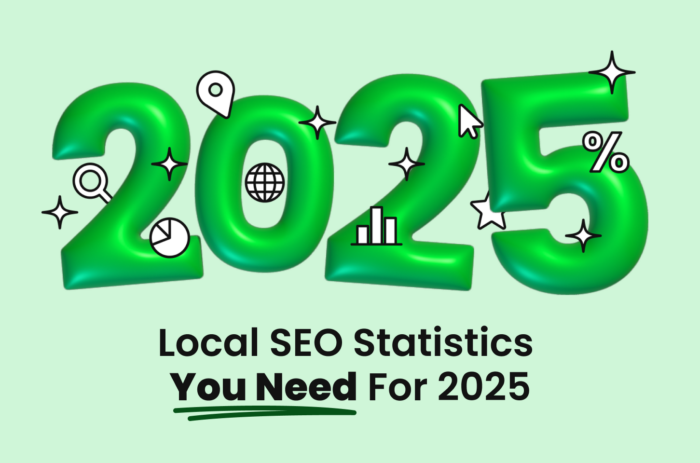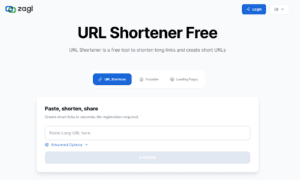As mobile usage continues to rise, did you know that over 70% of local search queries are made on mobile devices? This makes local SEO more important than ever. In 2025, your business’s visibility in local search results could be the deciding factor in attracting new customers. Local SEO is no longer just about optimizing for traditional keywords—it’s a combination of emerging technologies like voice search and mobile-friendliness that will determine how easily customers can find your business nearby.
Key Takeaways
- Local SEO in 2025 requires optimizing for both traditional search and emerging technologies like voice search and mobile-first indexing.
- Claiming and fully optimizing your Google Business Profile remains the foundation of successful local search visibility.
- User-generated content and authentic reviews significantly impact local search rankings and customer trust.
Evolution of Local SEO
Local SEO has undergone significant transformation from 2020 to 2025. Search engines now prioritize relevant, location-based content while mobile search has become the dominant way users find local businesses.
Changes in Search Engine Algorithms
Google’s algorithm updates between 2023 and 2025 have dramatically reshaped local search rankings. The introduction of AI-powered local intent recognition has made it easier for businesses to be discovered without exact keyword matches.
Voice search optimization has become critical, with nearly 40% of local searches now happening through voice assistants. This trend forces businesses to adapt their content to conversational queries.
The Shift Towards Mobile Search
Mobile-first indexing is now the standard approach for search engines. Google and other platforms primarily use the mobile version of websites to determine rankings and relevance.
Local searches on mobile devices have increased by 25% annually since 2023. Over 76% of people who search for something nearby on their smartphone visit a business within 24 hours.
Optimizing for Local Search
Local search optimization has evolved significantly in 2025. Businesses must focus on specific strategies to appear in local search results and Google’s map pack. The foundation of local SEO now relies on precision targeting, accurate business information, and enhanced map features.
Keywords and Content for Local Relevance
Local SEO success starts with targeting location-specific keywords, such as city names and neighborhoods, to ensure businesses appear in relevant searches.
Voice search optimization is crucial in 2025, as conversational queries become more common.
It’s also important to create content that addresses local concerns, events, and topics, such as neighborhood guides and city-specific resources, to boost local relevance and visibility.
Local Business Listings and NAP Consistency
NAP (Name, Address, Phone number) consistency remains fundamental to local SEO in 2025. Search engines rely on this information to verify business legitimacy and location.
Claiming and optimizing Google My Business (now Google Business Profile) is essential. Businesses should:
- Select the most specific business categories
- Add high-quality photos and videos
- Keep hours updated
- Respond to all reviews promptly
Beyond Google, businesses must maintain accurate listings on industry-specific directories. Healthcare providers should appear on medical directories, while restaurants need profiles on food-related platforms.
The Role of Maps and Driving Directions
Map visibility has become a critical factor in local search success. Businesses appearing in Google’s map pack receive significantly more clicks than organic results below.
Mobile-first map optimization is essential as most local searches occur on mobile devices. This means ensuring your business location renders correctly on different map applications and loads quickly on mobile connections.
Proximity-based search continues to gain importance. Businesses should optimize their listings to appear for “near me” searches by ensuring accurate GPS coordinates and location data.
How Finnish SEO Agencies Are Revolutionizing Local SEO
Finnish SEO agencies, particularly Muutos Digital, are at the forefront of local search optimization in 2025. With a strong focus on data-driven marketing strategies tailored to the Nordic region, these agencies are driving impressive results for businesses.
Muutos Digital, for example, has helped clients achieve a 500% increase in local search traffic, resulting in tangible business growth, such as more driving directions requests and phone calls—actions that lead directly to increased sales.
What sets Finnish agencies apart is their deep understanding of regional search behaviors, combined with advanced SEO techniques, including voice search optimization in local languages. Their data-driven approach ensures strategies are grounded in solid evidence, delivering measurable and impactful results.
Leveraging Mobile Search for Local Visibility
Mobile searches have become the primary way people find local businesses in 2025. With over 70% of searches now happening on mobile devices, businesses must adapt their local SEO strategies to capture this mobile audience effectively.
Mobile User Experience (UX)
Mobile UX directly impacts local search rankings in 2025. Search engines now prioritize websites that provide seamless mobile experiences, making this a critical factor for local visibility.
Fast loading times are essential – sites that load in under 2 seconds see 70% longer average session times. This increased engagement signals quality to search algorithms.
Location-based personalization helps businesses connect with nearby customers. Implementing geofencing technology can trigger relevant content when potential customers enter specific areas, increasing foot traffic by up to 25%.
Mobile-Friendly Website Design
Responsive design is no longer optional for local businesses. Sites must automatically adjust to any screen size while maintaining functionality and visual appeal.
Key mobile design elements include:
- Large, easy-to-tap buttons (minimum 44×44 pixels)
- Simplified navigation menus
- Readable font sizes (16px minimum)
- Properly spaced interactive elements
Local Features in Mobile Apps
Business apps with location-aware features are powerful tools for local SEO. By utilizing geolocation, apps can send targeted promotions, boosting engagement by up to 35%.
Mobile payment integration is now expected, with contactless options increasing customer retention by 28%.
Local inventory search capabilities give businesses an edge, while location-based push notifications can drive 3x higher engagement when timed strategically.
Building Trust through Reviews and Engagement
In the 2025 local SEO landscape, customer trust has become the currency that drives business success. User-generated content and strategic community involvement now serve as powerful tools for establishing credibility and improving search visibility.
Strategies for Collecting Reviews
It is important to ensure that businesses implement a systematic approach to gathering customer feedback. Post-purchase automated email sequences can increase review collection rates by 67% when sent within 24 hours of a transaction.
Effective Review Collection Methods:
- QR codes on receipts linking directly to review platforms
- Text message follow-ups with direct links
- Incentivized review programs (while complying with platform guidelines)
- In-store tablets or kiosks for immediate feedback
Managing Online Reputation
Daily monitoring of review platforms is no longer optional. Set up alerts for new mentions across Google Business Profile, Yelp, and industry-specific sites.
Response Timeline Guidelines:
| Review Type | Response Time | Response Approach |
| Positive | Within 24 hours | Express gratitude, mention specifics |
| Negative | Within 4 hours | Address concerns, offer solutions |
| Neutral | Within 48 hours | Thank customer, invite further feedback |
Studies show that businesses responding to at least 70% of reviews see a 15% higher conversion rate from online searchers.
Engaging with the Local Community
Community involvement creates authentic connections that algorithms increasingly recognize and reward. Participating in local events provides opportunities for genuine engagement beyond digital interactions.
Community Engagement Tactics:
- Sponsor neighborhood events and sports teams
- Host workshops or classes that showcase expertise
- Partner with complementary local businesses
- Create location-specific content highlighting community features
Digital community building matters too. Create and actively manage neighborhood-focused social media groups. Share useful local information that positions your business as a community resource, not just a service provider.



































